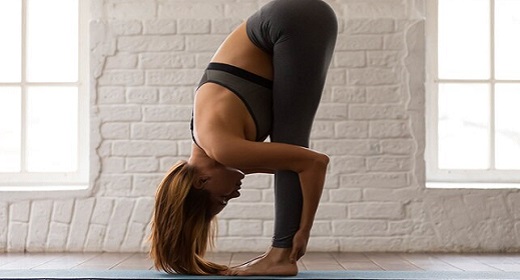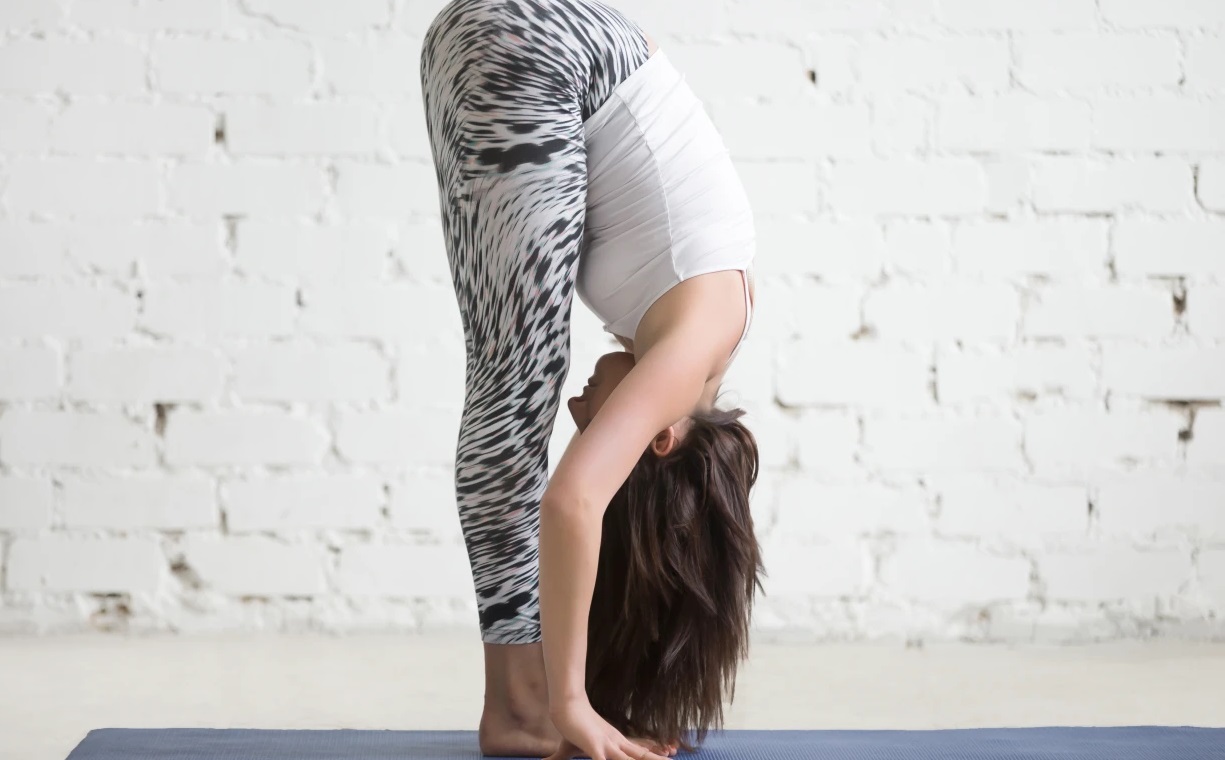by Ann Swanson: Stretch Your hamstrings, calves, back muscles, and glutes with Uttanasana…
Uttanasana (Standing Forward Bend) is a common pose that gently massages your abdominal organs, calms your nervous system, and stretches your back body (hamstrings, glutei, and back muscles). The pose―an integral part of Sun Salutations and flow yoga classes―improves balance, stimulates circulation, and challenges breathing by strengthening your diaphragm, which must work harder to inhale in this inverted orientation.
Uttanasana (Standing Forward Bend) Instructions
Stretch your entire back body with this pose. Get the most out of the asana by keeping a slight bend in your knees. This may help you feel the stretch in the belly (center) of your hamstrings. To protect your meniscus, tendons, and ligaments from pulling and tearing, don’t lock your knees.
Standing Forward Bend Anatomy
• As your weight is brought forward, your ankle dorsiflexors engage, stabilizing your feet and ankles further into dorsiflexion.
• When your upper body releases to gravity, your spinal extensors (the muscles attached to the back of your spine that enable standing and lifting) and latissimus dorsi (the largest back muscle, which protects and stabilizes your spine and contributes to back and shoulder strength) are stretched.
• Your hip flexors engage and your quadriceps muscles extend your knees to stabilize the bend.
• By pulling gently toward your legs, your arm muscles will flex your elbows while the muscles around your rib cage engage to stabilize, protract, and upwardly rotate your shoulder blades.
AVOIDING INJURY
While forward bends can be relaxing, introspective poses that promote back health, they can also cause strain or injury―especially if the backs of your legs are tight. These tips will help you stay safe while reaping all of the pose’s yummy benefits:
Protect Your Spine
Forward bends deliver a deep spinal stretch, which can help improve overall back health and reduce back pain. But during the transition in and out of the pose, your lower back becomes vulnerable as it takes on the weight of your upper body. If you have any back pain, arthritis, disk issues, osteopenia, or osteoporosis, try keeping your spine neutral (elongated and parallel to the floor) and moving
in and out of the pose with bent knees, an engaged core, and your hands on your shins or blocks.
Stretch from the Right Place
As you stretch your backside, it’s important to feel the pull in the belly of your muscles―not the joints or attachment points. Muscle tissue has more extensibility to stretch, and blood flow to facilitate repair, than the connective tissue of joint structures. Adding a slight bend to your knees will adjust the focus of the stretch into your hamstring muscles and prevent strain to nearby tendons and ligaments.
Avoid Overextension
People who are hypermobile tend to hyperextend, or lock, their joints. If this sounds like you, remember to microbend your knees, at least slightly. This keeps your knees from pulling on tendons and ligaments that are connected to knee cartilage and leg bones, preventing uneven pressure on your meniscus and microtears, which can develop over time.
Get Horizontal
Uttanasana and other standing poses that involve spinal flexion are generally riskier than supine or kneeling shapes because of the downward gravitational force imposed on your vertebrae and spinal disks.
If you have any risk factors, a safer way to practice spinal flexion is lying on your back in Apanasana (Knees-to-Chest Pose), on your hands and knees in Marjaryasana (Cat Pose), or in Balasana (Child’s Pose).










































